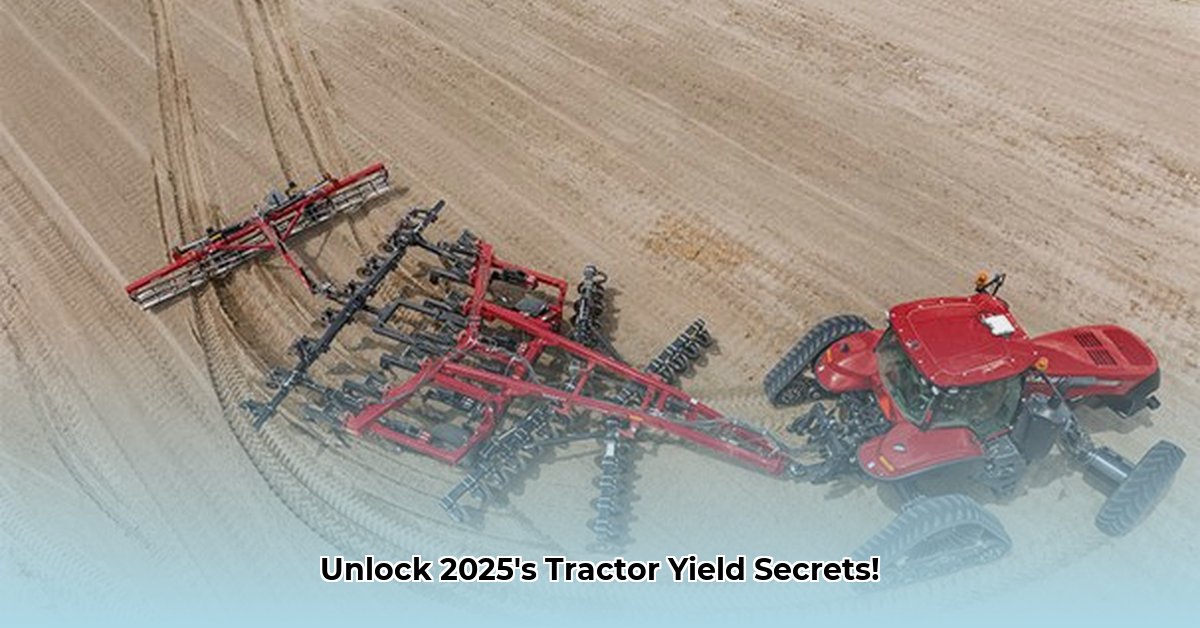
Case IH Magnum vs. Steiger: A Comparative Review for Sustainable Agriculture
Choosing the right tractor is a pivotal decision for any farmer. This comparative review analyzes two Case IH heavyweights—the Magnum and Steiger series—to help you select the best fit for your operation in 2025, emphasizing sustainable agricultural practices. We'll examine their strengths, weaknesses, and how their advanced technologies contribute to increased yields and environmental responsibility. For comparison, consider exploring other high-horsepower options like Kubota tractors.
Key Differences: Powerhouse vs. Versatile Workhorse
The Case IH Magnum and Steiger cater to different farming needs. The Magnum, a versatile workhorse, excels in a range of tasks. The Steiger, a powerhouse, is optimized for large-scale operations demanding maximum power and efficiency. Think of it as choosing between a dependable pickup truck and a heavy-duty hauler – both are powerful, but their strengths lie in different areas.
Let's delve into the specifics:
Engine Power, Fuel Efficiency, and Sustainability
Both the 2025 Magnum and Steiger feature significant engine upgrades, promising substantial fuel economy improvements. While precise horsepower figures for the new Steiger models remain unreleased, both lines incorporate Automatic Productivity Management (APM) and Diesel Saver technologies. These systems intelligently adjust engine power to match workload, maximizing efficiency and minimizing fuel consumption without sacrificing power. The exact fuel savings depend on factors such as field size, soil type, and tasks performed, but significant reductions are anticipated.
Data-Driven Decisions: Precision Farming with FieldOps
Both tractor lines utilize Case IH's FieldOps telematics system – a real-time farm management tool providing continuous updates on tractor performance, data analysis, and maintenance alerts. This data-driven approach optimizes farm operations, identifying areas for improvement and boosting yields. While FieldOps promises valuable insights, further research is needed to fully quantify the long-term agronomic benefits.
Minimizing Environmental Impact: Sustainable Soil Management
Sustainability is paramount in modern agriculture. The Magnum, often equipped with a Rowtrac configuration (a unique undercarriage design), reduces soil compaction compared to standard wheels. The Steiger's Quadtrac system minimizes compaction even further, promoting healthier soil and contributing to long-term farm viability. Reducing compaction means healthier plants and a more environmentally responsible approach.
Cost Savings and Connectivity: Long-Term Value
Case IH's "Connectivity Included" feature provides lifetime access to FieldOps telematics data without ongoing subscription fees, promoting both sustainability and cost savings. This access to performance insights translates into more economically sound farming practices.
Detailed Comparison: Magnum vs. Steiger
| Feature | Case IH Magnum | Case IH Steiger |
|---|---|---|
| Typical Use | Versatile, diverse farm tasks | Large-scale operations, high-power needs |
| Configuration | Wheeled or Rowtrac (reduced compaction) | Quadtrac (minimal compaction) |
| Engine Power | Substantial horsepower increase (5-15hp) | Substantial increase, exact figures pending |
| Transmission | PowerDrive or CVXDrive (Continuously Variable Transmission - a transmission that allows for seamless shifting) | High-capacity transmissions |
| Fuel Efficiency | Improved via APM & Diesel Saver technology | Improved by at least 2% (manufacturer claim) |
| Telematics | FieldOps integrated | FieldOps integrated |
| Soil Compaction | Considerably reduced with Rowtrac | Minimized with Quadtrac |
Choosing the Right Tractor: A Step-by-Step Guide
- Assess Your Needs: Consider farm size, crop types, soil conditions, and operational scale to determine which tractor best aligns with your requirements.
- Dealer Visit and Test Drive: Visit your local Case IH dealer, test drive both tractors, and consult with specialists to discuss your specific needs.
- Analyze Costs and ROI: Conduct a thorough cost-benefit analysis, considering fuel consumption, maintenance, and long-term operational expenses to determine the best return on investment.
- Maximize FieldOps: Develop a plan to fully utilize the FieldOps platform, leveraging data-driven insights to optimize decision-making and boost yields.
Investing in a new tractor is a significant commitment. Thorough research, a comprehensive cost analysis, and careful consideration of your farming goals are essential for a decision that supports both your current needs and long-term sustainability. The future of farming is data-driven, and your tractor choice plays a crucial role in shaping that future.
(Note: Further research and independent testing are recommended to obtain precise fuel consumption data per hectare for a definitive comparison.)